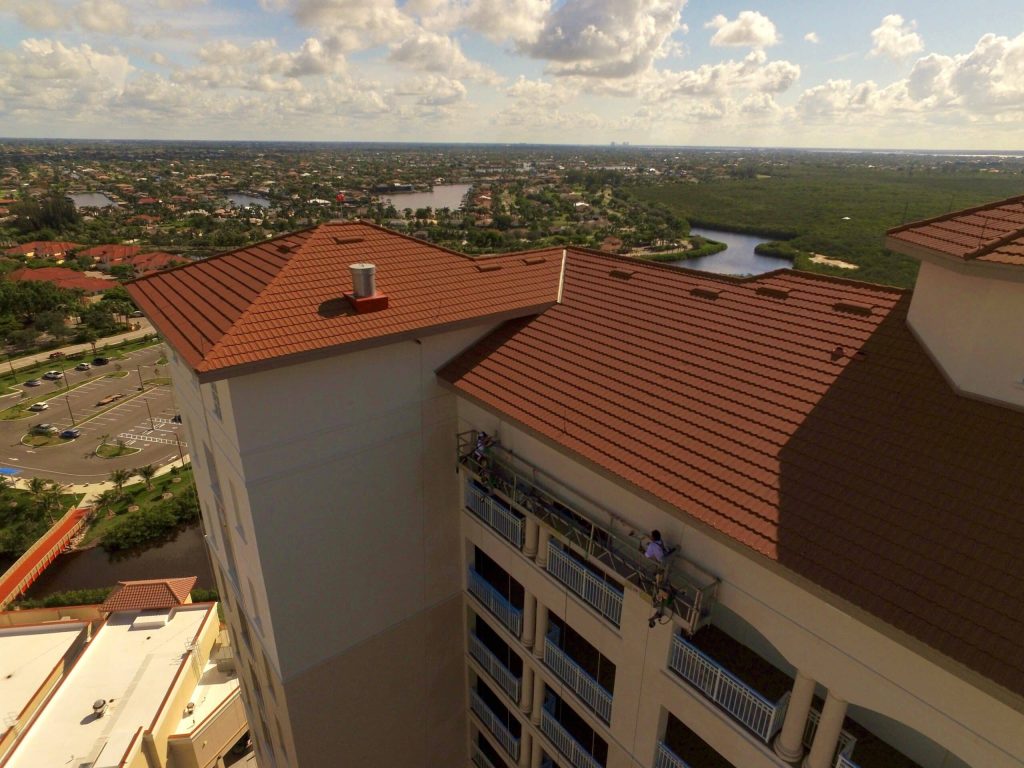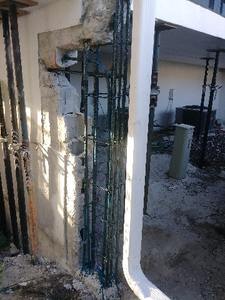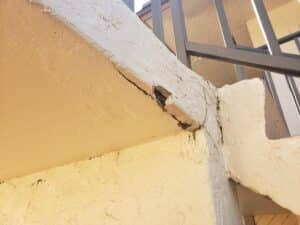Waterproofing your property is crucial for preventing damage and maintaining a safe, healthy environment. When water infiltrates a building, it can cause structural issues, mold growth, and damage to personal belongings. By taking measures to keep moisture out, you can protect your investment and ensure a longer lifespan for your property.
One key aspect of waterproofing is understanding where vulnerabilities might exist. Water can seep in through roofs, walls, basements, and even through tiny cracks in the foundation. Identifying these potential entry points is the first step toward effective waterproofing. Taking proactive measures to seal these areas can save a lot of money and hassle in the future.
There are various methods available for waterproofing, each with its own set of advantages and limitations. Whether using sealants, membranes, or specialized coatings, the right approach will depend on the specific needs of your property. It is also important to consider the long-term maintenance of these systems to ensure they continue providing protection.
In this guide, we will delve into why waterproofing is essential, highlight common areas that require attention, explore different waterproofing methods, and offer tips on maintaining these systems. By understanding these elements, you can make informed decisions and effectively safeguard your property against water damage.
The Importance of Waterproofing Your Property
Waterproofing is essential for protecting the structural integrity of any property. When water seeps into buildings, it can cause serious issues such as mold growth, wood rot, and weakened foundations. These problems not only compromise the safety of the building but also lead to expensive repairs and potential health risks for occupants.
Moreover, waterproofing helps preserve the value of your property. A well-maintained, dry building is more appealing to potential buyers and renters. It shows that the property has been cared for and that preventive measures are in place to avoid future damage. In areas prone to heavy rain or flooding, waterproofing is particularly crucial for preventing recurrent water damage.
Energy efficiency is another benefit of proper waterproofing. When a building is well-sealed, it is easier to maintain a consistent indoor temperature. This reduces the workload on heating and cooling systems, leading to lower energy bills. By keeping unwanted moisture out, waterproofing also prevents the deterioration of insulation materials, ensuring they remain effective.
In summary, waterproofing is an investment that protects your property from structural damage, maintains its market value, and enhances its energy efficiency. These benefits highlight why addressing waterproofing needs is a crucial aspect of property management.
Common Areas That Need Waterproofing
When waterproofing a property, it’s important to focus on areas most vulnerable to water infiltration. Here are some common spots you should pay attention to:
1. Roof: The roof is a primary barrier against weather elements. Water damage to the roof can lead to leaks, mold, and damaged insulation. Regular maintenance and applying waterproof coatings can help extend the roof’s lifespan.
2. Basement: Basements are particularly prone to water seepage due to their location below ground level. Water can enter through foundation cracks, porous walls, or floors. Waterproofing membranes and proper drainage systems can keep basements dry.
3. Foundation: The foundation supports the entire structure, making it crucial to protect from water damage. Cracks in the foundation can allow water to enter, causing shifts and instability. Waterproofing the foundation helps maintain its strength and integrity.
4. Exterior Walls: Exterior walls face constant exposure to weather elements. If not properly sealed, water can penetrate the walls, leading to moisture buildup and damage. Applying waterproof sealants and coatings can prevent this issue.
5. Windows and Doors: Gaps and cracks around windows and doors are common entry points for water. Ensuring these areas are properly sealed prevents leaks and drafts. Use weatherstripping and caulking for added protection.
6. Balconies and Decks: These external structures also require waterproofing. Water can pool on their surfaces, penetrating through joints and causing structural damage over time. Waterproof membranes and sealants safeguard these areas.
By focusing on these common areas, you can effectively protect your property from water damage. Regular inspections and timely maintenance are key to ensuring that your waterproofing measures remain effective.
Different Methods of Waterproofing: Pros and Cons
Choosing the right waterproofing method is crucial for effective protection. Here are some common methods along with their pros and cons:
1. Liquid Waterproofing Membrane:
– Pros: Easy to apply, suitable for various surfaces, creates a seamless barrier.
– Cons: Requires multiple coats, application must be even for effective coverage, can be sensitive to weather conditions during application.
2. Cementitious Waterproofing:
– Pros: Simple application, highly durable, perfect for concrete and masonry surfaces.
– Cons: Can be rigid and less flexible, may develop cracks over time if the structure shifts, not suitable for areas with heavy movement.
3. Bituminous Waterproofing:
– Pros: Excellent water resistance, good for roofs and basements, can be used in hot or cold applied forms.
– Cons: Bitumen-based materials can lose effectiveness over time, prone to damage from UV rays, may have an odor during application.
4. Polyurethane Waterproofing:
– Pros: Highly flexible, easy to apply, excellent for flat surfaces, can bridge small cracks.
– Cons: Sensitive to moisture content during application, relatively higher cost, may require specific surface preparation.
5. Sheet Membranes:
– Pros: Provides consistent thickness, excellent for large areas, highly resistant to wear and tear.
– Cons: Complex installation, requires skilled labor, seams need to be carefully sealed to prevent leaks.
Each method has its strengths and limitations. Selecting the most suitable one depends on your specific needs and the area requiring waterproofing.
How to Maintain Waterproofing Systems for Longevity
Keeping your waterproofing systems in good condition ensures they stay effective for years. Here are some tips for maintaining these systems:
1. Regular Inspections: Periodically inspect waterproofed areas for signs of wear, damage, or leaks. Early detection of issues can prevent more significant problems later.
2. Clean Gutters and Downspouts: Ensure that gutters and downspouts are free from debris. Clogged gutters can cause water to overflow and penetrate waterproofed surfaces.
3. Repair Damages Promptly: If you notice any cracks, holes, or other damages, address them immediately. Small issues can quickly escalate if left unchecked.
4. Reapply Sealants as Needed: Some waterproofing methods, like liquid membranes and sealants, may require reapplication over time. Follow manufacturer recommendations for reapplication schedules.
5. Maintain Drainage Systems: Effective drainage is crucial for reducing water buildup around your property. Ensure that all drainage systems are functioning correctly and direct water away from buildings.
6. Protect Surfaces: Use mats or coverings to protect waterproofed surfaces from heavy traffic or physical damage. Reducing wear and tear can extend the lifespan of these systems.
7. Consult Professionals: For thorough inspections and maintenance, consider consulting waterproofing specialists. They can provide expert advice and solutions tailored to your property’s needs.
By following these maintenance practices, you can ensure that your waterproofing systems remain effective and continue to protect your property from water damage.
Conclusion
Waterproofing your property is a vital step in protecting it from structural damage and maintaining a safe environment. From understanding the necessity of waterproofing to identifying areas prone to water infiltration, knowing the various methods available and how to maintain them are key to ensuring long-lasting protection. Whether dealing with foundations, roofs, or exterior walls, each part of your property requires attention to keep it dry and secure.
Selecting the right waterproofing method depends on the specific needs of your property. Evaluating the pros and cons of each option, from liquid membranes to sheet membranes, allows for informed decisions that best suit your requirements. Proper maintenance, including regular inspections and timely repairs, further extends the effectiveness of waterproofing systems.
To ensure your property remains protected from water damage, consider reaching out to experts who can provide tailored solutions. At McLeod’s Contracting Solutions, we specialize in waterproofs and sealants, concrete and stucco restoration, and more. Contact our waterproofing contractor today to learn how we can help secure your property against water infiltration.







